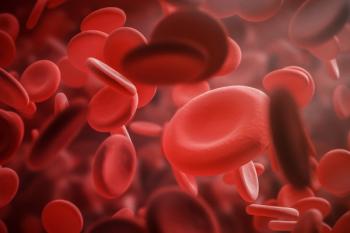
The unremitting headache
Clinical Twister on headache
HEALTH-SYSTEM EDITION
CLINICAL TWISTERS
The unremitting headache
A 17-year-old male presents with severe, throbbing, unremitting headache that has lasted 16 days. Two days prior to this, the patient was seen in the emergency room and received intravenous droperidol and a prescription for rofecoxib (Vioxx, Merck) 25 mg daily. The patient reports that as the droperidol effect diminished, his headache returned. Rofecoxib dosed at 50 mg daily did not affect his headache.
The patient is nutritionally stable and has no history of head trauma. He normally takes no medications. CT scan, neurological testing, and lab tests (including electrolytes) are normal, and no other physical findings are present. The patient is a competitive swimmer and concerned about medication use. The staff resident asks for a pharmacist consult. What would you recommend? (The patient is to be seen by a neurologist in a week.)
Assuming this patient is on no other medications, I would suggest a trial of rizatriptan (Maxalt, Merck) or another 5-HT1 receptor agonist, provided, of course, that he has no allergy or other contraindications to them. These agents cause little sedation for the patient.
Droperidol has recently been reported to cause some cardiac arrhythmias. In a patient who is a swimmer and, therefore, physically challenges himself and his heart frequently, I would have avoided use of droperidol.
Amy E. Copfer, Pharm.D., BCNSP
Clinical Pharmacy Coordinator Northwest Medical Center
Clinical Assistant Professor
University of Arizona College of Pharmacy
To better make recommendations, I would want to know whether this was the first such headache the patient has had, what symptoms have been associated with it (nausea, vomiting, phono- or photophobia), and whether the pain is unilateral or bilateral. Status migrainosus or hemicrania continua are unilateral headaches that are unremitting until the cycle is broken. I am assuming no concurrent medical conditions that would contraindicate certain medications or contribute to headaches.
If the pain has been unilateral and constant for 16 days, unremitting, and of acute onset, indomethacin capsules or suppositories should work at a dose of 25-50 mg three times daily to break the cycle. Indomethacin works much better for this type of headache than do other NSAIDs or COX-2 inhibitors because it penetrates the blood-brain barrier better. Although not all patients will respond to indomethacin for this type of headache, clinically, indomethacin works best in our patients seen in the Head and Chronic Pain Unit. If it is in-effective, and the patient has no cardiac contraindications, sumatriptan injection or other triptans may break this cycle.
If this fails as an outpatient regimen, then a three-day administration of dihydroergotamine (DHE 45) IV in an inpatient setting may be needed to break the acute headache cycle. DHE and triptans (i.e., sumatriptan) cannot be used within 24 hours of each other.
If these headaches are occurring frequently, then daily prophylactic medication may be necessary.
Sahar Z. Swidan, Pharm.D., BCPS
Chelsea Community Hospital
Department of Pharmacy, Chelsea, Mich.
Clinical Associate Professor of Pharmacy
University of Michigan
Are you puzzled by a clinical situation that would make a good topic for this column? Or do you relish an opportunity to test your skill in resolving a clinical challenge? Please send us a clinical scenario or indicate your interest in providing us with a patient assessment by e-mailing us at
Kathy Hitchens. The unremitting headache.
Drug Topics
2002;2:HSE9.
Newsletter
Pharmacy practice is always changing. Stay ahead of the curve with the Drug Topics newsletter and get the latest drug information, industry trends, and patient care tips.





























































































































